Gene DefinitionDNA, which determines an organism's characteristics, including how it looks, lives, and interacts with its environment, is made up of genes. Genes are found in all living things and can influence a person's health throughout their lifetime. Different creatures have varying numbers of genes. The total number of genes in the human genome, which consists of all human genes, is about 30,000. Only slight genetic variations that manifest as physical differences cause 99.9%Trusted Source of individuals to have identical human genomes. These variations, which may be hereditary or the result of the interplay of a person's genes with their environment, also help to explain why some people are predisposed to particular diseases while others are not. An individual who examines genes and how to target them to enhance many facets of life is known as a geneticist. People can profit from genetic engineering in many ways, including by preventing human diseases. 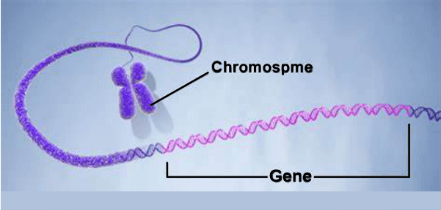
What Exactly are Genes?Deoxyribonucleic acid, or DNA, is the material that makes up genes. The biological instructions life requires to develop, grow, and reproduce are encoded in DNA. Chromosomes, present in every cell's nucleus, are where genes are stored. The DNA strands that comprise each gene are blueprints for producing specific proteins. These proteins allow for the expression of certain physical characteristics like eye color, height, and hair color. They can also establish a person's likelihood of possessing or acquiring genetic diseases. DNA is transferred between adult organisms and their progeny during reproduction. This suggests that the genes on the chromosomes are passed down from parents. Chromosomes come in pairs?human chromosomes number 46. A person receives two sets of 23 chromosomes from each parent: one from the mother and the other from the father. The Molecular Definition of a Gene:The whole nucleic acid sequence required for the production of a functional gene product, which can be a polypeptide or any RNA, is what Lodish and others refer to as a gene. It also contains all the regulatory sequences, noncoding introns, and structural genes (coding genes). The majority of eukaryotic genes produce monocistronic mRNA, while the majority of prokaryotic genes produce polycistronic mRNA. How are They Made?A gene is made up of a lengthy combination of four distinct nucleotide bases, which are the fundamental units of DNA. Numerous combinations are available. In nucleotides from Trusted Source, there are four different kinds of bases:
A gene is made up of two strands that are coiled around one another. The connections between the bases keep each strand together. As follows are the combinations of several bases:
The position of these nucleotides in a DNA strand dictates the type of instructions present. For instance, the sequence ATCGTT would tell Trusted Source to use brown eyes, but ATCGCT might tell it to use blue eyes. According to a trusted source, approximately 50 million to 300 million base pairs make up a human chromosome. On 23 pairs of chromosomes, the human genome comprises around 3 billion nucleotides and 20,000 genes. What Role do Genes Have in Health?Numerous internal and external aspects of a person's life, including their likelihood of inheriting a certain eye color or developing certain diseases, are influenced by their genes. Gene changes can also result in proteins that are improperly produced and unable to carry out their intended functions. These gene mutations may result in genetic illnesses from a Reliable Source. Gene mutations cause some disorders, including sickle-cell anemia and Huntington's disease. Some diseases frequently run in families because genes are passed down from parents to children. Additionally, exposure to environmental pollutants like cigarette smoke might result in gene alterations. Where do Genes Originate?When an organism has cells that each have two full sets of chromosomes, it is said to be diploid. Diploid humans exist. Twenty-three chromosomal pairs can be found in the majority of body cells. The male parent provides one set of chromosomal pairs, and the female parent provides another. The X and Y chromosomes are two of the chromosomes that determine whether an embryo is male or female. 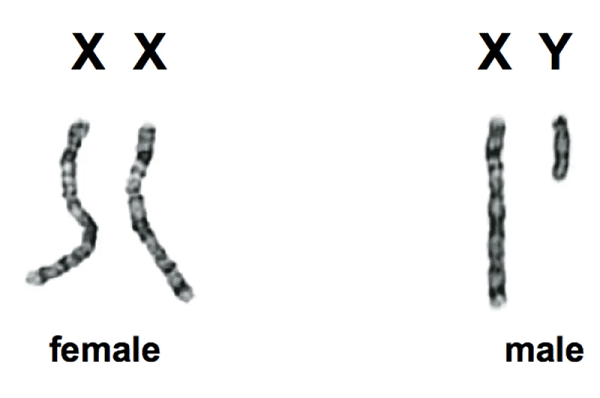
The child receives an X chromosome from the female parent. An X or Y chromosome can come from the father. Autosomal chromosomes are the remaining 22 chromosomes. Chromosomes 1 through 22 are how scientists refer to them. Genes Found on a Single Chromosome:Varying organisms have different total gene counts on a single chromosome. Only three genes comprise the bacteriophage virus R17, while between five and ten genes comprise the SV40. On a single, 1 mm long chromosome, the E. coli bacteria have more than 3000 genes. Gene Size:The number of nucleotide pairs in E. coli exceeds four million (4638858 base pairs). About 3000 genes are thought to be present in E. coli. Since each amino acid in a polypeptide chain is represented by a sequence of three consecutive nucleotides in a single strand of DNA, it is possible to directly estimate the minimal size of a gene that codes for a protein. Therefore, the size of a gene can be directly evaluated by measuring the length of the polypeptide chain. One thousand three hundred fifty nucleotides encode the 450 amino acids that comprise an average polypeptide chain. As a result, there will be about 3000 genes in E. coli (4000000/1350 = 3000). The number of human protein-coding genes is thought to be less than 30.000, according to estimates from the international human genome sequencing project, which is based in the United States and is led by the National Human Genome Research Institute (NHGRI). C. elegans, a simple roundworm, has roughly 20,000 genes. Chromosomes contain more than 3 billion base pairs in a single copy. The coding domains of these genes occupy only 3% of the genome. 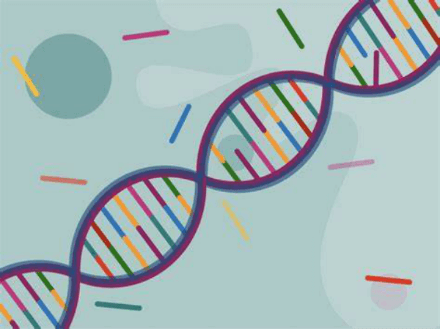
A Gene's Fine Structure:One double-stranded helix of DNA, which makes up a gene, is the only one that contains it. Numerous distinct regions make up a gene. The main section is the coding sequence, which contains data on the polypeptides' amino acid sequence. Regulatory sequences can be found at relatively fixed locations on both the right and left sides of the coding sequence, upstream or minus on the left and downstream or plus on the right. Promoters, which differ between prokaryotes and eukaryotes, are a component of regulatory sequences. Different Types of Genes: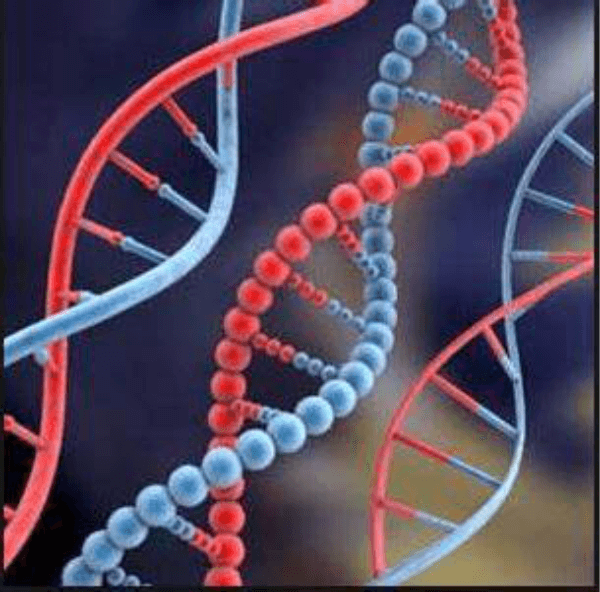
Basic Genes:One DNA strand of simple genes contains a base sequence that codes for specific amino acids. The ending region is located downstream. The promoter is situated downstream of the coding region. 1. Split Genes:The majority of eukaryotes have a large number of noncoding sequences in between coding sequences. Exons are the DNA segments of genes that contain the gene's code. Introns are noncoding sequences that are found in between exons. Introns and exons are alternated. Introns are typically not translated and do not contain any genetic information. These genes are referred to as split or interrupted genes. Precursor mRNA, or pre-mRNA, is the term used to describe the mRNA produced from this DNA. Pre-mRNA has both exons and introns. By using an excision technique, the introns are eliminated. Splicing is the term used for this procedure. The remaining segments, called exons, are connected to create the mature mRNA that participates in translation. For example, the globe has two introns, ovalbumin has seven, and collagen has 52 in the mature mRNA, which is substantially smaller than the pre-mRNA. 2. Genes that overlap:Many viruses have genes that overlap with one another. DNA sequences that code for a single protein make up the majority of genes. However, some sequences can produce several proteins. Fredrick Sanger first identified this behavior in bacteriophage x 174. Here, the short length of the viral DNA is used to create several proteins. This is accomplished in a variety of ways. Sometimes a gene will produce two proteins because its starting locations are different. Similarly, two proteins are produced by stopping the expression of the same gene at two separate locations. In other instances, a DNA sequence does not differentiate between exons and introns. Adjacent introns are used for expression in this DNA sequence at other times, which otherwise solely uses exons. Different proteins are produced due to the unequal splicing of a single length of mRNA. In this manner, several proteins can be produced from a single DNA strand. 3. Transposons or Jumping Genes:It was once believed that genes had clear, fixed loci and were static. On the other hand, recent research has shown that DNA fragments can move to new sites on the same or different chromosomes. She first found it in Indian maize corn, according to Barbara Mc Clintock. The cobs have colorful kernels on them. Segments of DNA that enter genes that code for pigmented kernels and inactivate those genes lead to the development of light-colored kernels. Transposons are the technical term for these mobile genes. They can hop around the genome, changing how genes are expressed. Transposable elements are a subset of DNA's moderately repetitive DNA class. There are distinct endpoints to a transposon. It has a central section that is very long. Each transposon has a unique base sequence on either end composed of inverted repetitions or palindromes on the opposing strands. Transposons can be recognized thanks to their terminal repeats. The target site, the recipient site, is where a transposon is placed. The expression of genes can change as a result of transposable elements. Mutations may result from them as well. They reside on the plasmids of bacteria. 4. Modifiable Genes:In some cases, many genes present on the same or distinct chromosomes work together to code for a particular polypeptide instead of just one gene. Genetic Analysis:A total of 2,000 genetic tests that aid physicians in the diagnosis of genetic illnesses were also made possible by the human genome project. Genetic testing can reveal whether a person carries a gene thought to be responsible for an inherited disease. A person's DNA can be examined during a genetic test to see whether any alterations or mutations could increase their chance of developing a certain disease. The findings may aid in the diagnosis of diseases by medical professionals. Doctors may use genetic testing for several reasons, including:
In 2005, researchers compiled a list of frequent genetic variants, or haplotypes, in the human genome. It is called the "Haplotype map" or "HapMap." This information has aided in accelerating the hunt for the genes responsible for prevalent human diseases. Recent FindingsGeneticists have recently discovered an additional layer of heritable genetic information that is not stored in the genome but rather in the "epigenome," a collection of chemical molecules that can instruct the genome on how to behave. The instructions needed to construct proteins in the body are stored in DNA. These proteins carry out numerous cellular processes. The proteins and chemical elements that make up the epigenome can bind to DNA and control a wide range of biological processes. These procedures involve activating and deactivating genes. This can change the expression of genes and regulate protein synthesis in particular cells. Gene switches can activate and deactivate genes at various times and for varying periods. The manner and timing in which distinct gene sets are activated or inactivated in separate cells determine the distinctions between cells. Gene Marking:The genome has been "marked" by epigenomic substances when they bind to DNA in the cell and change how it functions. Although the markers do not alter the DNA's sequence, they do alter how cells use the DNA's instructions. The stains can be transferred from cell to cell during division and even from generation to generation. Many bodily processes are under the control of specialized cells. In red blood cells, for instance, specialized cells create the proteins that transport oxygen from the air to the rest of the body. Many of these alterations in the genome are regulated by the epigenome. As specialized cells and the epigenome alter throughout a person's lifespan, the chemical tags on the DNA and histones, which are proteins that support the shape of a chromosome, can reorganize. Smoking, poor food, and viral diseases are lifestyle and environmental variables that can alter the epigenome. They may subject a person to forces that cause bodily reactions. Direct alterations in the epigenome may result from these responses, some of which may be detrimental. Some human diseases are brought on by flaws in the proteins that "read" and "write" epigenomic markers. Genes involved in cell development or the immune response can be turned on or off by changes in the epigenome. These modifications may result in cancerous development that cannot be regulated or tumors that the immune system cannot remove. For instance, modifications to the genome, the epigenome, or both may cause cancer. To map the locations and comprehend the purposes of each chemical tag that marks the genome, epigenomics researchers are concentrating on this topic. The knowledge gained from this material might help people comprehend the human body better and find healthier lifestyle options. Gene Therapy: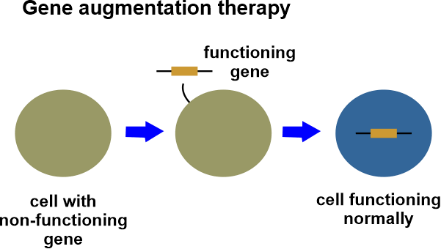
To treat or prevent a disease or medical issue, the medical procedure known as "gene therapy" employs chunks of DNA from Trusted Sources. To treat an illness, genes are injected into the cells and tissues of a patient. A damaged gene is frequently repaired or replaced with a healthy gene copy in gene therapy. It's still early days for gene therapy. However, it is also being used by medical professionals to treat acquired diseases like leukemia as well as inherited conditions like hemophilia and sickle cell disease. Testing of Genes to Predict Cancer:The ability to forecast who is most prone to contract diseases like early-onset Alzheimer's disease and breast cancer is another way genetic information is used. For instance, women who carry the BRCA1 gene have a markedly increased risk of breast cancer. A girl can take a test to determine if she carries that gene. Children of BRCA1 carriers have a 50%Trusted Source probability of inheriting the abnormality. Genetic Testing for Individualized Treatment: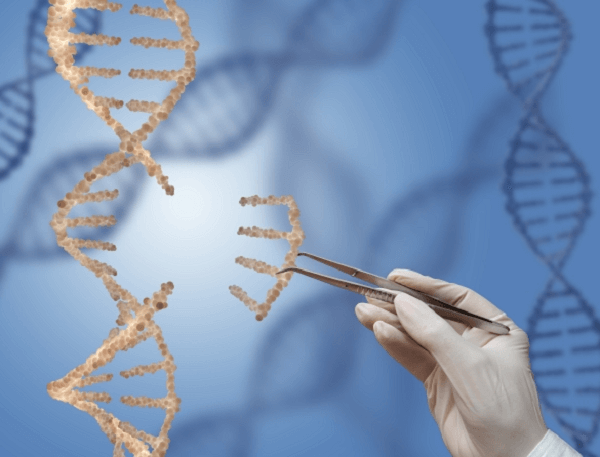
Depending on a patient's genetic composition, genetic testing can assist doctors in selecting the appropriate medication for them. Testing for pharmacogenetics is what this is. It scans for genetic alterations that can indicate which treatments or dosages are best for a patient. Doctors can use it to foretell if a patient will experience a major adverse effect from a medicine. Chemical Composition of Genes:Except in some viruses, where the genes are made of a chemically related substance termed ribonucleic acid, deoxyribonucleic acid (DNA) makes up genes (RNA). Two strands of nucleotides make up a DNA molecule and wind around one another like a twisted ladder. The sugars and phosphates that make up the ladder's sides are joined pairs of nitrogenous bases, while the sugars and phosphates that make up the ladder's rungs. These bases are thymine (T), adenine (A), guanine (G), and cytosine (C) (T). An A-T ladder rung is created when an A on one chain interacts with a T on the other; a C on one chain interacts with a G on the other. The two chains unravel if the connections between the bases are severed, and unbound nucleotides in the cell cling to the chains' exposed bases. The base-pairing rule determines how the free nucleotides align along each chain: A binds to T, and C binds to G. Hereditary information is transmitted from one cell generation to the next through this mechanism, which produces two identical DNA molecules from a single original molecule. Transcription and Translation of Genes:The arrangement of bases along a strand of DNA establishes the genetic code. A particular gene's product will split out from the DNA molecule it is located in when it is required. The free nucleotides in the cell are converted during transcription into a strand of RNA-containing bases compatible with the gene. (A and U form base pairs during the creation of RNA because DNA has the nucleotide thymine [T], but RNA has the base uracil [U] instead.) The ribosomes perform the translation or protein synthesis process, which receives the single RNA chain called messenger RNA (mRNA). A second kind of RNA called transfer RNA (tRNA) links the nucleotides on the mRNA with particular amino acids during translation. All proteins comprise one or more linked polypeptide chains, formed by the arrangement of amino acids by the arrangement of nucleotides?every trio of nucleotides codes for one amino acid. The assembly of a single enzyme or polypeptide chain was shown to be governed by a single gene in 1940s experiments. However, this finding has made it clear that not all genes produce an enzyme and that some enzymes are composed of several small polypeptides produced by two or more different genes. The one gene, one enzyme theory is used to describe this. Regulation of genes:The regulator gene and the operon are depicted in a model. Eukaryotes and prokaryotes have quite different mechanisms for controlling the regulation of genes. According to experiments, many of the genes found in an organism's cells are inactive frequently, if not always. In light of this, a gene can be turned on or off at any time in both eukaryotes and prokaryotes. It has been extensively studied how genes in bacteria are activated and deactivated. Genes for the structural, operator, and regulatory functions are the three categories found in bacteria. Structural genes produce a certain type of polypeptide. Operator genes contain the starting code for the transcription of the DNA message from one or more structural genes into mRNA. As a result, structural genes and operator genes are joined together to form a functional unit known as an operon. The regulator gene, which generates a tiny protein molecule called a repressor, ultimately regulates the operon's activity. To stop the operator gene from starting the synthesis of the protein required by the operon, the repressor binds to it. Whether an operon is on or off is dependent on the presence or absence of specific repressor molecules. As previously stated, microorganisms apply to this approach. Despite having no operons, eukaryotes' genes are nevertheless autonomously controlled. Multiple layers of regulation are involved in the series of activities that lead to gene expression in higher organisms. The presence or absence of molecules called transcription factors frequently affect these activities. These variables, which may operate as activators or enhancers, affect the rate of transcription, which is the fundamental level of gene control. At specific periods and in specific types of cells, particular transcription factors control the RNA produced by genes. The promoter, or regulatory region, located in the genes of higher organisms, is a common site for transcription factor binding. After transcription, the editing and splicing processes remove introns (noncoding nucleotide sequences) from the primary transcript. A functioning strand of mRNA is the end product of these operations. While most genes perform this routinely as part of the mRNA synthesis process, certain genes have numerous main transcripts that can be spliced in different ways to produce various mRNAs, producing various proteins. At the translational and posttranslational stages, several genes are also regulated. Mutations in Genes: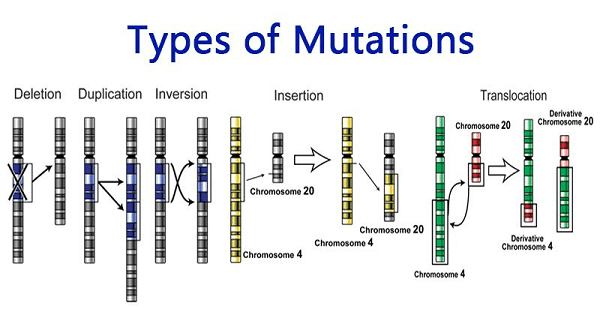
When a gene's base sequence is altered, mutations result. Nucleotides can be deleted, doubled, rearranged, or replaced. Each modification to a nucleotide has a different outcome. Most of the time, the mutation has little to no impact, but when it does, the alteration it makes to the organism can be harmful or even fatal. An advantageous mutation will become more prevalent until it becomes the norm in a population. The Conclusion:An instruction set known as a gene is transferred from generation to generation. They contain the data necessary to identify a person's unique physical and biological characteristics, such as blood type, eye color, and hair color. Most genes make a specific protein needed for life, growth, and reproduction in humans. These proteins serve a variety of roles throughout the body. Sections of DNA make up genes. Four distinct nucleotide bases make up a gene, and there are numerous ways to sequence them. The nucleotides that make up DNA are chemical building blocks. Different base sequences result in varied instructions responsible for different physical characteristics, such as having blue or brown eyes. A protein's ability to function properly can be compromised by changes in the genes that code for it. Genetic problems may result from them, which are referred to as gene mutations. The ability to detect changes in a person's DNA that may indicate whether they are at risk of contracting a disease or passing one to their progeny is being studied by researchers as a potential use of genetic testing.
Next TopicGlaucoma Definition
|
 For Videos Join Our Youtube Channel: Join Now
For Videos Join Our Youtube Channel: Join Now
Feedback
- Send your Feedback to [email protected]
Help Others, Please Share









